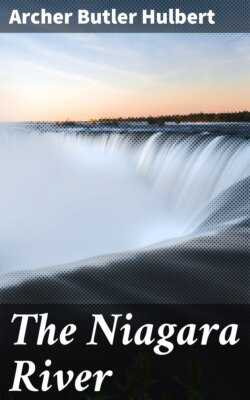Читать книгу The Niagara River - Archer Butler Hulbert - Страница 26
На сайте Литреса книга снята с продажи.
Remains of Stone Piers of the "First Railway in America"—the British Tramway up Lewiston Heights, 1763.
ОглавлениеStanding upon these rocks and looking out over that hurrying mass of waters, it seems almost impossible to imagine any power being able to stop them; but on the 29th of March, 1848, the impossible happened, the Niagara ran dry. From the American shore across the rapids to Goat Island one could walk dry-shod. From Goat Island and the Canadian shore the waters were contracted to a small stream flowing over the centre of what was then the Horseshoe; only a few tiny rivulets remained falling over the precipice at other points. The cause of this unnatural phenomenon was wind and ice. Lake Erie was full of floating ice. The day previous the winds had blown this ice out into the lake. In the evening the wind suddenly changed and blew a sharp gale from exactly the opposite direction, driving the mass of ice into the river and gorging it there, thus cutting off almost the whole water supply, and in the morning people awoke to find that the Niagara had departed. The American Fall was no more, the Horseshoe was hardly a ghost of its former self. Gone were the rapids, the fighting, struggling waters. Niagara's majestic roar was reduced to a moan. All day people walked on the rock bed of the river, although fearful lest the dam formed at its head should give way at any moment. By night, the warmth of the sun and the waters of the lake had begun to make inroads on the barrier and by the morning of the next day Niagara had returned in all its grandeur.
However cold Niagara's winter may be, the moan of falling water here can always be heard, though at times the volume is very small. The winter scenes here often take rank in point of wonder and beauty with the cataract itself. When the river is frozen over below the Falls the phenomenon is called an "Ice Bridge," the blowing spray sometimes building a gigantic sparkling mound of wonderful beauty. The island trees above the Falls, covered by the same spray, assume curiously beautiful forms which, as they glitter in the sun, turn an already wonder-land into a strange fairyland of incomparable whiteness and glory.
A short distance up the river along the shore a position just opposite the apex of the Falls is reached. Here, along the shore of the island, the waters are comparatively shallow, but toward the Canadian shore races the current which carries fully three fourths of Niagara's volume. Out in the very midst of the current is a small speck of land, all that is now left of what was once Gull Island, so named from its having been a favourite resting place for these birds, which can hardly find a footing now on its contracted shores. From what can be learned of the past history of this island, it must have occupied about two acres three quarters of a century ago. Its gradual disappearance shows to what degree the mighty forces of Niagara are removing all obstacles placed in their path. Goat Island is gradually suffering the same fate. At points the shore line has encroached upon the island to a distance of twenty feet in a half-century. At this point the carriage road used to run out beyond the present edge of the bluff.
Passing on along the shore of the island, Niagara's scenery is present everywhere. At quite a distance up stream the Three Sister Islands are reached. These islands were named from the three daughters of General P. Whitney, they being the first women to visit them, probably in winter when the waters were low.
